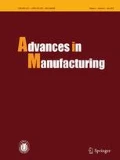Abstract
A surface composite layer enhances the mechanical characteristics of a surface while retaining the properties of the base material. Friction stir processing (FSP) is a method for forming surface metal matrix composites (SMMCs) that reinforce a surface with particles. In the current study, a new method entitled friction stir vibration processing (FSVP) was applied to form SMMCs on the surface of AZ91 magnesium alloy with SiC particles as the reinforcing particles. Contrary to FSP, in FSVP, the workpiece was vibrated normal to the processing line while the tool rotated and traversed. The microstructure and mechanical properties of friction stir (FS) and friction stir vibration (FSV) processed specimens were evaluated. Additionally, the effects of vibration frequency and process parameters on different characteristics of FS and FSV processed specimens were studied. The results showed that the stir zone grains for FSV processed specimens were finer than those for FS processed specimens, and the second phase particles (SiC particles) had a more homogenous distribution in the former specimens than in the latter specimens. This was related to the effect of workpiece vibration during FSVP, which increased the material deformation and led to enhanced dynamic recrystallization and the breakdown of agglomerated SiC particles. The results indicated that the stir zone grain size decreased, and the distribution homogeneity of the SiC particles increased as vibration frequency increased. It was also observed that the stir zone grain size increased, and the mechanical properties of the processed specimens decreased as tool rotation speed increased.















Similar content being viewed by others
References
Abbasi M, Abdollahzadeh A, Omidvar H et al (2016) Incorporation of SiC particles in FS welded zone of AZ31 Mg alloy to improve the mechanical properties and corrosion resistance. J Mater Res 107:566–572
Abdollahzadeh A, Shokuhfar A, Omidvar H et al (2019) Structural evaluation and mechanical properties of AZ31/SiC nano-composite produced by friction stir welding process at various welding speeds. Proc Inst Mech Eng Part L J Mater Des Appl 233:831–841
Abdollahzadeh A, Shokuhfar A, Cabrera JM et al (2019) In-situ nanocomposite in friction stir welding of 6061-T6 aluminum alloy to AZ31 magnesium alloy. J Mater Proc Technol 263:296–307
Abdollahzadeh A, Shokuhfar A, Cabrera JM et al (2018) The effect of changing chemical composition on dissimilar Mg/Al friction stir welded butt joints using zinc interlayer. J Manuf Proc 34:18–30
Segal VM (2004) Engineering and commercialization of equal channel angular extrusion. Mater Sci Eng A 386:269–276
Edalati K, Horita Z (2016) A review on high-pressure torsion (HPT) from 1935 to 1988. Mater Sci Eng A 652:325–352
Nunes LGS, Machado MLP (2018) Simulation of the accumulative roll-bonding process through warm torsion test. J Mater Res Technol 7:326–330
Barati M, Abbasi M, Abedini M (2019) The effects of friction stir processing and friction stir vibration processing on mechanical, wear and corrosion characteristics of Al6061/SiO2 surface. J Manuf Process 45:491–497
Dadaei M, Omidvar H, Bagheri B et al (2014) The effect of SiC/Al2O3 particles used during FSP on mechanical properties of AZ91 magnesium alloy. J Mater Res 105:369–374
Zheng FY, Wu YJ, Peng LM et al (2013) Microstructure and mechanical properties of friction stir processed Mg-2.0Nd-0.3Zn-1.0Zr magnesium alloy. J Magnes Alloys 1:122–127
Chai F, Zhang D, Li Y (2014) Effect of thermal history on microstructures and mechanical properties of AZ31 magnesium alloy prepared by friction stir processing. Materials 7:1573–1589
Iwaszko J, Kudla K, Fila K (2016) Friction stir processing of the AZ91 magnesium alloy with SiC particles. Arch Mater Sci Eng 77:85–92
Asadi P, Faraji G, Besharati MK (2010) Producing of AZ91/SiC composite by friction stir processing. J Adv Manuf Technol 51:247–260
Abbasi M, Bagheri B, Dadaei M et al (2015) The effect of FSP on mechanical, tribological and corrosion behavior of composite layer developed on magnesium AZ91 alloy surface. Int J Adv Manuf Technol 77:2051–2058
ASTM-E3-11 (2017) Standard guide for preparation of metallographic specimens. Annual Book of ASTM Standards. American Society for Testing and Materials, West Conshohocken
ASTM-E8M (2016) Standard test methods for tension testing of metallic material. Annual Book of ASTM Standards. American Society for Testing and Materials, West Conshohocken
ASTM-E112-13 (2017) Standard test methods for determining average grain size. Annual Book of ASTM Standards. American Society for Testing and Materials, West Conshohocken
ASTM-E384-11 (2011) Standard test method for Knoop and Vickers hardness of materials. Annual Book of ASTM Standards. American Society for Testing and Materials, West Conshohocken
Abbasi M, Givi M, Ramazani A (2019) Friction stir vibration processing: a new method to improve the microstructure and mechanical properties of Al5052/SiC surface nano-composite layer. Int J Adv Manuf Technol 100:1463–1473
Kaibyshev R, Shipilova K, Musin F et al (2005) Continous dynamic recrystallization in an Al-Li-Mg-Sc alloy during equal-channel angular extrusion. Mater Sci Eng A 396:341–351
Darvishi Kamachali R, Steinbach I (2012) 3D phase-field simulation of grain growth: topological analysis versus mean-field approximates. Acta Mater 60:2719–2728
Fouladi S, Abbasi M (2017) The effect of friction stir vibration welding process on characteristics of SiO2 incorporated joint. J Mater Process Technol 243:23–30
Hull D, Bacon DJ (2011) Introduction to dislocations. Butterworth-Heinemann, Britain
Naderi M, Abbasi M, Saeed-Akbari A (2013) Enhanced mechanical properties of a hot-stamped advanced high-strength steel via tempering treatment. Metall Mater Trans A 44:1852–1861
Callister WD (2003) Materials science and engineering: an introduction. Wiley, Hoboken
Estrin YZ, Zabrodin PA, Braude IS et al (2010) Low temperature plastic deformation of AZ31 magnesium alloy with different microstructures. Low Temper Phys 36:1100–1112
Barooni O, Abbasi M, Givi M et al (2017) New method to improve the microstructure and mechanical properties of joint obtained using FSW. Int J Adv Manuf Technol 93:4371–4378
Uthaisangsuk V (2009) Microstructure based formability modeling of multiphase steels. Dissertation, IEHK, RWTH- Aachen
Dieter GE, Bacon D (1988) Mechanical and metallurgy. McGraw-Hill, London
Hertzberg RW (1996) Deformation and Fracture mechanics of engineering materials, 4th edn. Wiley, Hoboken
Bagheri B, Mahdian Rizi AA, Abbasi M et al (2019) Friction stir spot vibration welding: improving the microstructure and mechanical properties of Al5083 joint. Metallogr Microstruct Anal 8:713–725
Li YS, Zhang Y, Tao NR et al (2009) Effect of the Zener-Hollomon parameter on the microstructures and mechanical properties of Cu subjected to plastic deformation. Acta Mater 57:761–772
Chang CI, Lee CJ, Huang JC (2004) Relationship between grain size and Zener-Holloman parameter during friction stir processing in AZ31 Mg alloys. Scr Mater 51:509–514
Starink MJ, Deschamps A, Wang SC (2008) The strength of friction stir welded and friction stir processed aluminium alloys. Scr Mater 58:377–382
Callister WD (2003) Materials science and engineering: an introduction. Wiley, Hoboken, pp 153–164
Author information
Authors and Affiliations
Corresponding author
Rights and permissions
About this article
Cite this article
Bagheri, B., Abbasi, M. Development of AZ91/SiC surface composite by FSP: effect of vibration and process parameters on microstructure and mechanical characteristics. Adv. Manuf. 8, 82–96 (2020). https://doi.org/10.1007/s40436-019-00288-9
Received:
Revised:
Accepted:
Published:
Issue Date:
DOI: https://doi.org/10.1007/s40436-019-00288-9



